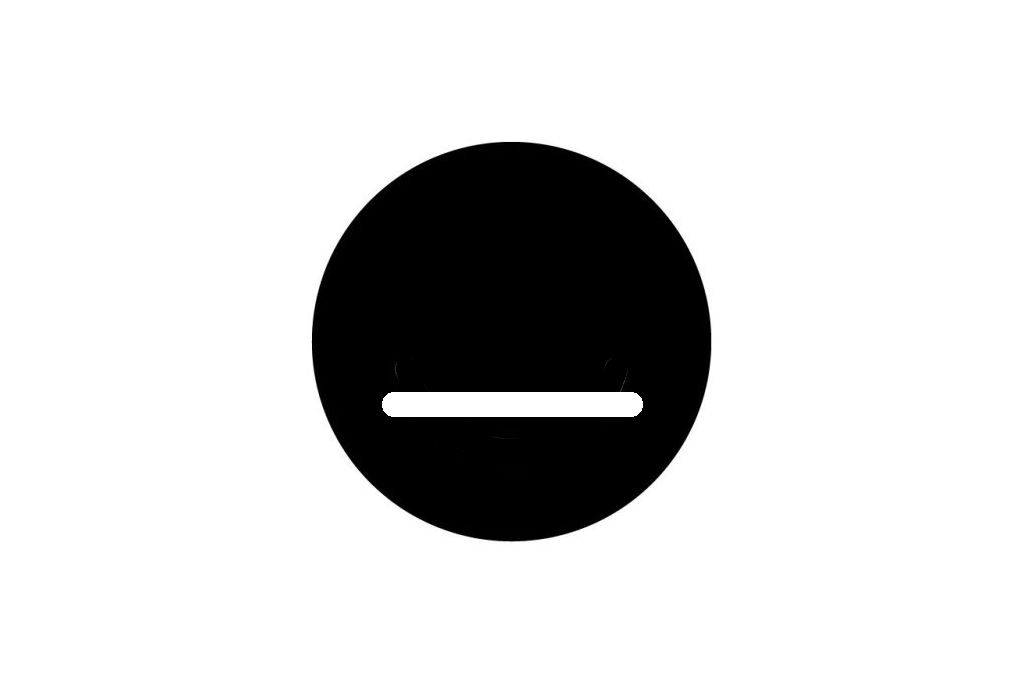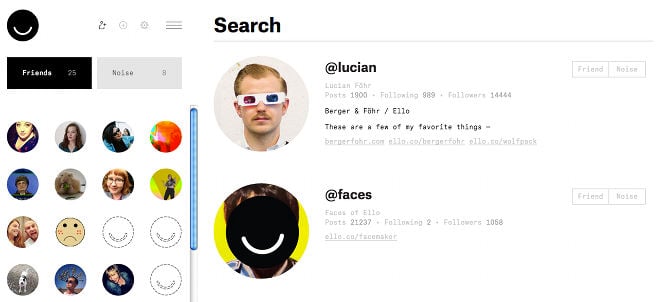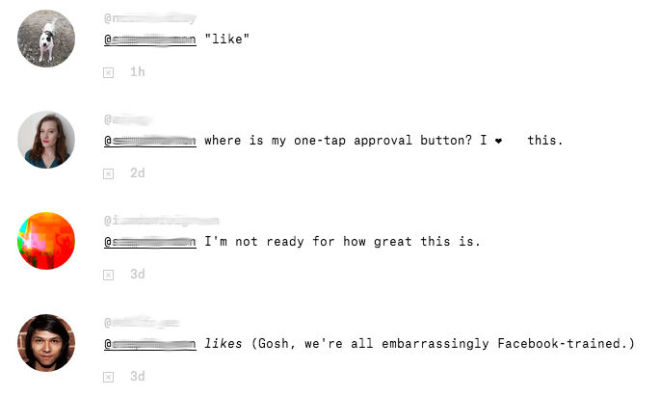Junk Explained: Is New Social Network ‘Ello’ Really All It’s Cracked Up To Be?
Pro: it supports animated GIFs. Con: it might sell all of your private information.

Last week you may have noticed people online talking about something called Ello. I wondered if they were getting nostalgic about the Electric Light Orchestra or sitcoms set in Vichy France. Sadly/happily, no. Ello is a new social network website with a minimalist interface and emphatically no advertising.

Originally a private, aesthetically pleasing hangout for artists, designers and their mates, it’s still in invitation-only beta. But by last Thursday afternoon it was number five in Google’s hottest searches, my Facebook friends were begging to join, and one silly sausage had already forked over $500 on eBay for an invite. (The best way in is to get an existing user to invite you – every user gets 25 invitations.)
It’s like the good old days a decade ago when a Gmail beta invite was the hottest tech ticket around. Or maybe it’s more like 2011’s early rush to join Google+, which is now acknowledged as a failure. Let’s investigate.
Who’s Behind It, And What Makes It Different?
Ello’s first iteration went online in early 2013 and ran, privately, for a year before the more robust beta version was developed; it seems to have been online since May. Artist and designer Paul Budnitz applied to social media the same low-res, high-craft approach of his Kidrobot designer vinyl toys and Budnitz Bicycles minimalist titanium bikes. (The others in Ello’s founding “supergroup” are designers Todd Berger and Lucian Föhr, and Gabe Varela, Matthew Kitt, Jay Zeschin and Justin Gitlin of boutique software development consultancy Mode Set.)
Ello’s minimalism isn’t just aesthetic; it’s ideological. It reacts against the way many social networks sell their users’ information and relationships to advertisers. By contrast, Ello is completely ad-free, and doesn’t sell user data to third parties.
“We believe a social network can be a tool for empowerment,” the site’s manifesto reads, in part. “Not a tool to deceive, coerce, and manipulate – but a place to connect, create, and celebrate life. You are not a product.”
It’s a zeitgeisty sentiment. Increasing amounts of social-media real estate are now dedicated to advertising and paid and boosted posts. Facebook, notoriously, games its algorithms to bury posts from your friends and the Pages you follow while lifting paid content. In April 2012, the average Page post reached 16% of fans. Now, organic reach is down to 1 to 2%, and Facebook is laughing all the way to the bank. Well, when it’s not manipulating users’ emotions.
“We think this is evil,” Budnitz said.
Ello has a kind-of-adorable list of Rules written in the language of kids’ secret clubs (“not allowed”; “kicked off”, “break the rules”) rather than alienating legalese (“Terms of Service”; “infringement”; “violations”). The rules are driven by civility and consideration of others, and explicitly exclude commercial, deceptive and automated activity.
What’s It Like To Use?
I’m a writer, not a designer, so when I joined Ello I found its minimalist interface pretty non-intuitive. Retreating to Facebook and Twitter felt like sinking into a warm bath. I’m also not sure of the wisdom of going beta when it’s still so glitchy.
“Ello should probably have made a website that actually works on a basic level before they launched if you ask me,” said my friend Richard – on Facebook.
“It’s alpha quality,” said Tom – also on Facebook.
As someone trained by other social networks to react to other people’s posts with little heart, star, arrow or thumbs-up icons, I’m really feeling the lack of any liking/favouriting mechanism. (Creating a ‘love’ bookmarking feature is on Ello’s to-do list.)

But Ello already does most of what Facebook and Twitter does. Strikingly, it separates people you follow into ‘friends’ and ‘noise’. (Nobody will ever know which category you’ve put them in.)
The posting engine is a black box called the ‘Omnibar’, in which you can type, cut/paste and rich-format text, @mention other users, add external links and upload photos. (Good news: Ello supports animated GIFs.) There are no character limits or image size restrictions. You can comment on posts, and see how many times they’ve been viewed.
Because Ello was created by and for artists, it uses ‘containers’ that let you mix and match text, links and images and customise the look of each post. If you’ve ever felt annoyed by Twitter and Facebook’s automatic formatting, you might value Ello’s para-blogging layout editor.
More features are rolling out daily – among those still to come are private messaging, Tumblr-style reposts with attribution, an emoji library (currently you need to cut and paste them), video integration via YouTube, Vimeo, Instagram and Vine, audio integration via Soundcloud, and smartphone apps. Some features will be premium and purchased with micropayments – this, Ello says, will be how the site finances itself.
Will It Kill Facebook?
The internet is littered with sad failed social networks. In January, Princeton researchers used infectious disease models to predict that Facebook would lose 80% of its peak user base between 2015 and 2017. But is Ello the site they’ll all switch to?
We choose our social networks based on where our friends are. Current research shows today’s infants are much more into texting than social media, which perhaps explains the growing popularity of SMS/IM apps including WhatsApp, Viber and Snapchat — and Facebook’s decision in July to force users onto its standalone Messenger app.
We also want to feel in control of what we share, and to whom. In this context, Ello’s promise to wrest control from advertisers and promoters is alluring. But online social networking always draws users into patterns of monitoring, stalking and self-censoring. We tend to leave once these start to feel overwhelming; but I abandoned G+ because it was boring. I’d log-in and find that nothing had happened.
oooooh what’s happening on ello today? ……………… ……… …………………………………….. nothing.
— steph harmon (@stephharmon) September 25, 2014
But Are You Still Ello’s Product?
There’s a noticeable shift to Ello among the queer community, possibly because Facebook is forcing drag artists and trans people to use their legal names – despite the privacy and safety violations this enables – or to convert their personal accounts to Pages (which, let’s remember, are almost completely choked off from fans unless their admins pony up).
“We invite people to be who they want to be on Ello,” Budnitz says. “There is no reason for us to require people to use real names.” Like, say, Mark Zuckerberg.

But some have pointed out that Ello is currently less safe than Facebook or Twitter, because it has yet to implement key privacy and abuse measures. Right now, all users can see everything within the network; there’s no ability to make an account private, set differing levels of privacy for different posts or users, block individual users or flag inappropriate content. (Currently, users report these things via email.)
“So far, the Ello community has grown exceptionally peacefully,” said a company email sent on Friday. “We put this down to good luck, and even more to the many amazing people who have joined our Beta.”
To me there’s something worrying about this ‘she’ll be right’ approach. We really only have Ello’s word that they’re the good guys. As the privacy statement says: “Ello does not have any affiliated companies right now. But if we do in the future, we may share information with them, too.” Good to know.
As the privacy statement says: “Ello does not have any affiliated companies right now. But if we do in the future, we may share information with them, too.”
Ello’s much-vaunted ideological purity means it may never get big. To seriously threaten Facebook, it must develop more features and buy more server space as its user base grows. All while its staff work pro bono, while rejecting revenue from advertising or data onselling, and while only charging users micropayments.
However, Ello has been pretty quiet about its main source of income: US$435,000 from Fresh Tracks Capital. And venture capital firms require startups to supply exit strategies, which require selling out users one way or another. As influential technology identity Andy Baio notes in an Ello post, to repay the investment, “Ello will inevitably be pushed towards profitability and an exit, even if it compromises their current values.”
There’s lots of, shall we say, white space for Ello to become just like the networks it’s reacting against. Yet so far, its only response is to emphasise how easy it is to delete your account if Ello takes a direction you don’t like.
Even if Ello fails, “you are still currency in the form of promotion for Ello’s founders,” writes Rose Eveleth at The Atlantic. “You’re a line on their resume that gets them that next job, or that next seed money for that next startup.”
Designer and social entrepreneur Aral Balkam is already bailing. “I’m sorry, Paul, but by taking venture capital you have made a crucial mistake that is incompatible with the goals you set out in your manifesto.”
But entrepreneur Steve Jennings is more upbeat, saying if Ello is serious about putting users first, it must radically rethink its funding model. Among Jennings’ suggestions are a crowdfunding campaign to buy out its investors, greater diversity in its executive operations, and an approach to funding that’s as clean and transparent as its design.
–
Visit Ello here.
–
Mel Campbell is a freelance journalist and cultural critic. She blogs on style, history and culture at Footpath Zeitgeist and tweets at @incrediblemelk.